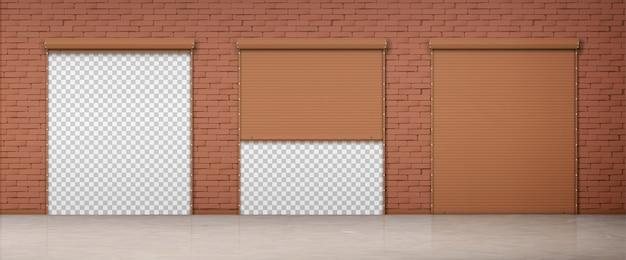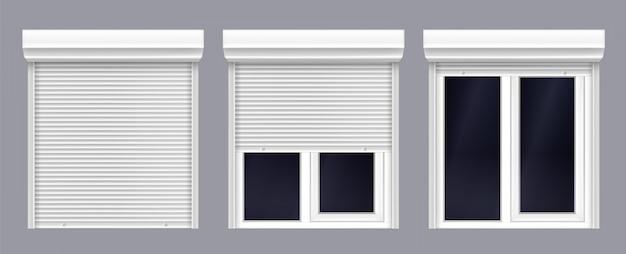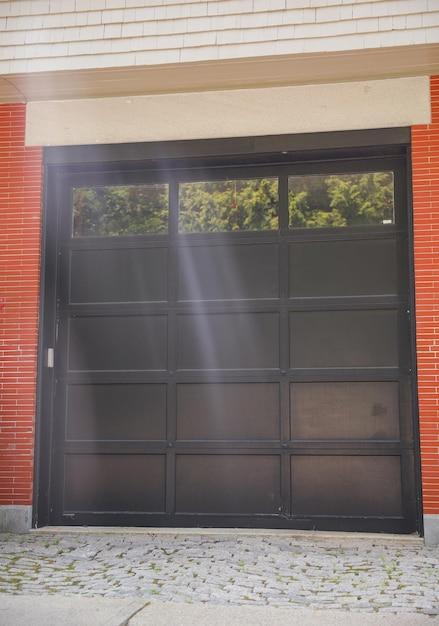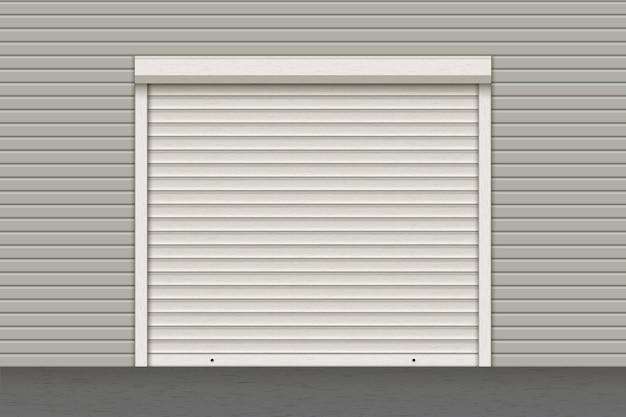If you have noticed drafts, water leaks, or pests making their way into your garage, it may be time to replace your garage door seal. A properly functioning seal not only keeps your garage space secure but also helps to maintain the temperature inside. But how much does it cost to replace a garage door seal? In this blog post, we will explore the various factors that can affect the cost of garage door seal replacement, as well as provide you with some tips on finding the right seal for your door. So, let’s dive in and ensure your garage is well-protected!
Garage Door Seal Replacement Cost: All You Need to Know
The Price of Peace and Quiet
So, you’ve realized that your garage door seal has seen better days. Maybe it’s cracked, weathered, or just downright worn out. Time to replace it, right? But before you jump right into it, let’s talk about everyone’s favorite topic: cost.
Cracking the Code
Garage door seal replacement cost can vary depending on a few key factors. First up, we have the material. Are you going for the classic rubber seal, or are you feeling fancy with a vinyl one? Then, you’ll need to consider the size of your garage door. Is it a one-car garage or more like a mansion for your vehicles? Finally, don’t forget to account for the complexity of the installation. Are you a seasoned DIYer or do you prefer to leave it to the pros?
Rubber or Vinyl: The Battle Begins
When it comes to materials, rubber is the old faithful. It’s durable, reliable, and won’t break the bank. On the other hand, vinyl is like the cool kid on the block. It’s a bit pricier than rubber, but it offers increased resistance to UV rays and extreme temperatures. Plus, it comes in a variety of colors, so you can match it with the overall aesthetic of your garage. Who said your garage can’t have style?
Breaking the Bank or Scoring a Deal
Now, let’s get down to brass tacks. On average, the cost of replacing a garage door seal can range from $50 to $200. If you opt for the rubber seal, you’re more likely to hit the lower end of the spectrum. Vinyl seals tend to be a bit costlier, especially if you prefer a thicker gauge. Remember, these prices are for standard-sized garage doors. If you have a custom-sized door or want to install multiple seals, be prepared to dig a bit deeper into your pockets.
DIY or Call the Pros
Ah, the eternal question: to DIY or not to DIY? If you’re a handyman or handywoman extraordinaire, replacing the garage door seal can be a fun weekend project. Just make sure you have the right tools and a can-do attitude. However, if wielding a screwdriver isn’t your idea of a good time, it might be best to hire a professional. They’ll have the experience and expertise to tackle the job swiftly and efficiently, saving you from any potential headaches and curse-filled vocabulary lessons.
Conclusion: Putting Your Money Where Your Garage Is
In the end, the garage door seal replacement cost will depend on your material choice, door size, and installation preference. Rubber or vinyl, DIY or professional, there’s a cost that fits every budget and skill level. So, bid adieu to that drafty garage and unwanted critter invasions. Invest in a new garage door seal, and enjoy the sweet sound of silence (or maybe even a high-five from your wallet).
Garage Door Seal Replacement Cost: Garage Door Seal for the Top and Sides
Why Garage Door Seal for the Top and Sides Matter
When it comes to keeping your garage cozy, secure, and free from unwanted pests, a proper garage door seal for the top and sides is key. This often-overlooked component plays a crucial role in maintaining the temperature inside your garage, keeping pesky critters out, and preventing those annoying drafts. So, let’s dive into why you should pay attention to your garage door seal for the top and sides and how it affects your overall garage experience.
Tackling Drafts with a Solid Seal
Nobody likes feeling a chill creep into their garage, especially during those frigid winter months or sizzling summer days. A well-functioning garage door seal ensures a comfortable temperature by preventing drafts from sneaking in through gaps around the top and sides of your garage door. Not only will this make your time spent in the garage more pleasant, but it may also help you save some money on your energy bill, as your heating or cooling system won’t have to work as hard to compensate for those annoying drafts.
Bidding Farewell to Unwanted Guests
If you’ve ever discovered a furry little neighbor setting up camp in your garage, you know how important it is to keep the critters outside where they belong. A worn-out or damaged garage door seal can be an open invitation for all sorts of pests, from small rodents to insects. By ensuring a proper seal for the top and sides, you can create a barrier that discourages unwanted guests from making your garage their new home. So, say bye-bye to those uninvited visitors and reclaim your garage for yourself!
Calculating the Garage Door Seal Replacement Cost
Now that you understand the importance of a functional seal for the top and sides of your garage door, you might be wondering about the cost of its replacement. Well, the cost can vary depending on a few factors, including the material of the seal, the size of your garage door, and whether you choose to hire a professional or go the DIY route. On average, you can expect to spend anywhere between $100 to $300 for a garage door seal replacement. But keep in mind, this investment can bring you long-term savings by enhancing energy efficiency and preventing potential damage that pests might cause.
A good-quality garage door seal for the top and sides can make all the difference when it comes to keeping your garage comfortable and critter-free. By preventing drafts and deterring unwanted guests, this tiny yet mighty component ensures that your garage remains a functional and enjoyable space. So, don’t overlook the importance of replacing your garage door seal, and say goodbye to those pesky drafts and unwelcome visitors once and for all!
Types of Garage Door Bottom Seals
Rubber Seals: The Classic Choice
When it comes to garage door bottom seals, rubber seals are the undisputed champions. These bad boys have been around forever, and for good reason. They are durable, flexible, and provide excellent insulation to keep out pesky drafts and critters. Plus, they are easy to install and won’t break the bank. So, if you’re looking for a tried-and-true option, rubber seals are the way to go.
Vinyl Seals: The Smooth Operators
If you want something a bit more modern and stylish, vinyl seals are the way to go. These sleek seals not only keep out the cold air but also add a touch of sophistication to your garage door. With their smooth surface, they create a seamless transition between the door and the ground. They are also resistant to water and UV rays, making them extremely durable. So, if you’re after both functionality and aesthetics, vinyl seals are the perfect choice.
Brush Seals: For the Fancier Folks
Now, if you’re feeling a bit fancy and want to take your garage door bottom seal game to the next level, brush seals are the way to go. These bad boys are made up of thousands of tiny bristles that create a barrier against leaves, dust, and debris without impeding the movement of the door. They are also great at keeping out unwanted critters, like those pesky mice who always seem to find their way into your garage. So, if you want to add a touch of luxury and keep your garage critter-free, brush seals are the way to go.
Threshold Seals: The Heavy-duty Option
For those who want maximum protection from the elements, threshold seals are the top choice. These heavy-duty seals are installed directly onto the garage floor, creating a watertight barrier against rain, snow, and even floods. They are made from durable materials like aluminum or rubber and can withstand heavy foot and vehicle traffic. So, if you live in an area with extreme weather conditions or simply want to ensure your garage stays dry no matter what, threshold seals are the ultimate solution.
When it comes to garage door bottom seals, there are plenty of options to choose from. Whether you go for the classic rubber seals, the sleek vinyl seals, the fancy brush seals, or the heavy-duty threshold seals, the most important thing is to find the one that suits your needs and fits your budget. So, go forth and seal the deal, my friend!
Garage Door Bottom Seal Replacement: Keeping Your Garage Secure and Draft-Free
Easy Steps to Replace Your Garage Door Bottom Seal
If you’re tired of feeling chilly winds sneaking into your garage or noticing unwanted guests (like critters) making their way inside, it’s time to consider replacing your garage door bottom seal. Don’t worry, it’s a straightforward process that you can tackle with a few basic tools and a sprinkle of patience.
Assess the Situation
The first step is always to assess the situation at hand. Take a good look at your existing garage door bottom seal and determine if it’s worn out, cracked, or just not doing its job properly. It’s like evaluating the fashion choices of your least stylish aunt – if it ain’t functioning right, it’s out!
Gather Your Tools
Before jumping into action, make sure you have the essential tools at hand. Trust me, wandering around the house in search of a screwdriver can be a mood killer. You’ll need a pry bar, pliers, a hammer, and, of course, a new garage door bottom seal.
Remove the Old Seal
Now comes the fun part – removing the old seal. Use the pry bar to carefully pry away the existing seal from the bottom of your garage door. Be gentle; you’re not trying to remove a loose tooth from a six-year-old. Once you’ve loosened it, grab your pliers and give it a good yank to finish the job.
Install the New Seal
With the old seal out of the picture, it’s time to welcome the new one. Take your shiny new garage door bottom seal and align it with the bottom of your door. Imagine it as a little fashion show for your garage – make sure it’s positioned perfectly to prevent drafts and unwanted pests.
Tips and Tricks for a Job Well Done
Replacing your garage door bottom seal doesn’t have to be as daunting as that time you tried to assemble an IKEA bookshelf. Here are a few helpful tips to ensure a job well done:
Measure Twice, Cut Once
Before cutting your new seal, measure the length of your garage door to ensure a perfect fit. Nothing says “oops” like a seal that’s too short or too long. And no, you can’t just tuck it into your pants like a misplaced tie.
Remember the Direction
When installing your new seal, pay attention to the direction. The larger flap should face inside the garage while the smaller one should face outside. Think of it like having a welcome mat on both sides of your door – one for bugs and one for drafty winds.
Replacing your garage door bottom seal may not earn you a Michelin star, but it will keep your garage cozy, secure, and critter-free. With a little bit of effort and the right tools, you’ll be sealing the deal in no time. So, say goodbye to unwanted drafts and hello to a garage that’s always ready for a good ol’ game of hide-and-seek (but without the creepy crawlies).
Replacing a Garage Door Weather Seal
What’s up with that Worn-Out Weather Seal
The old weather seal on your garage door has seen some things in its day. It’s battled against the elements, endured countless slams, and protected your garage from the invasion of critters big and small. But now, it’s showing signs of wear and tear – cracks, gaps, and a general lack of sealing power. It’s time for a replacement.
Let’s Seal the Deal
Replacing a garage door weather seal may sound like a daunting task, but fear not, my friend. With a little bit of patience and some basic tools, you’ll have your garage door sealing like a champ in no time.
Step 1: Measure Twice, Cut Once (Or Just Once, Really)
Before you dash off to the store in search of a new weather seal, take a moment to measure the length of your garage door. You want to make sure you get the right size to fit snugly and keep those pesky drafts out.
Step 2: Out with the Old, In with the New
Now comes the fun part – removing that tired old weather seal. Grab your trusty utility knife and carefully cut away the old seal, making sure not to damage the door itself (we don’t need any unnecessary garage door drama). Once it’s all peeled off, give the area a good clean to remove any residue and prepare for the new seal.
Step 3: Seal the Deal (Literally)
This is where the magic happens. Take your shiny new weather seal and start at one end of the door. Fit it snugly into the channel, making sure it’s aligned properly. As you work your way along, give it a gentle tug every now and then to ensure it’s securely in place. Don’t forget to do a victory dance – you’ve just sealed the deal!
Step 4: Test Drive
Now that your garage door is sporting its fresh new weather seal, it’s time to put it to the test. Close the door and marvel at the newfound snugness. Enjoy the silence as the outside world is locked out, and the cozy warmth (or coolness) of your garage is preserved.
Conclusion: The Cost of Comfort
Replacing a garage door weather seal doesn’t have to break the bank (or your spirit). With a little DIY know-how and a sense of adventure, you can conquer this task and keep your garage protected from the elements. So go forth, my brave and weather-conscious friend, and embrace the seal of approval!
Garage Door Weather Stripping Replacement Cost
When it comes to keeping your garage free from unwanted critters and pesky drafts, having a well-sealed garage door is a must. But what will it cost you to replace that worn-out weather stripping? Let’s dive into the nitty-gritty of garage door weather stripping replacement cost and find out just how much this improvement might set you back.
The Price Tag
Replacing your garage door weather stripping can vary in cost depending on several factors. On average, you can expect to spend around $100 to $200 for the materials and labor combined. Of course, this estimate can fluctuate depending on the size of your garage door, the complexity of the installation, and the type of weather stripping you choose.
DIY or Hire a Pro
If you’re a DIY enthusiast, you may be tempted to tackle this project on your own to save some bucks. Warning! Proceed with caution. While replacing weather stripping might sound like a walk in the park, it can quickly turn into a battle with a tangled mess of adhesive and frustration.
Hiring a professional, on the other hand, ensures a proper installation without the headache. Plus, you get the added benefit of sitting back with a refreshing beverage while someone else does the heavy lifting (and sticky work).
Types of Weather Stripping
When shopping for weather stripping, you’ll come across various types, each with its own price tag. Here are a few options you might encounter:
1. Adhesive-backed foam tape (Average cost: $10-$30)
The budget-friendly contender in the weather stripping world, adhesive-backed foam tape is a popular choice among those looking for a quick fix without breaking the bank. Just peel, stick, and voila! You’re ready to keep the elements at bay.
2. V-strip (Average cost: $10-$20)
Purchasing a flexible V-strip allows you to seal those tricky spots where your garage door meets uneven surfaces. Its versatility and easy installation make it a reliable choice for many DIYers.
3. Bottom seal (Average cost: $30-$50)
If you’re tired of unwanted critters making their way into your garage despite your best efforts, a durable bottom seal may be just what you need. With its sturdy construction and ability to withstand the test of time, this option adds an extra layer of protection against invaders.
Replacing your garage door weather stripping doesn’t have to break the bank. With various options available, you can find the perfect fit for your budget and needs. So, whether you decide to tackle it yourself or call in the pros, the investment in a well-sealed garage door is sure to keep you cozy and critter-free for many years to come.
Can You Replace the Rubber Seal on a Garage Door
The Annoyingly Elusive Rubber Seal
So, you’ve noticed that the rubber seal on your garage door has seen better days. It’s cracked, worn out, and doing a horrible job of keeping out the elements. But fear not, my friend, for you are about to embark on the epic quest to replace the rubber seal on your garage door.
Step 1: Ready your Weapons
Before you dive headfirst into battle, you’ll need an arsenal of tools. Grab your trusty screwdriver, a ladder, and a healthy dose of determination.
Step 2: Find the Beast
Once you’re armed and ready, locate the rubber seal on your garage door. It’s usually found at the bottom, acting as a valiant protector against rain, wind, and unwanted critters.
Step 3: Remove the Fallen Warrior
Now it’s time to bid farewell to the old, worn-out seal. Use your screwdriver to remove any screws holding it in place, or simply give it a firm tug if it’s attached with adhesive.
Step 4: Hail the New Hero
With the old seal defeated, it’s time to bring in the reinforcements. Grab your shiny new rubber seal and prepare for its installation.
Step 5: Unleash the Beast
Fit the new seal into place, making sure it lines up with the edges of your garage door. Use your screwdriver to secure it with screws, or follow the instructions if adhesive is involved.
Step 6: Test the Mighty Defender
Now that your new rubber seal is in place, it’s time to put it to the test. Close your garage door and marvel at the newfound protection it provides. No more pesky drafts or unwanted rain invading your sanctuary!
Embrace Your Victory
Congratulations, my brave soul! You have conquered the treacherous path to replacing the rubber seal on your garage door. May your entrance remain secure, your garage stay dry, and your triumph be a shining example for future warriors seeking to defeat the dreaded rubber seal!
Now go forth, and may you never fear the wrath of a worn-out garage door seal again!



